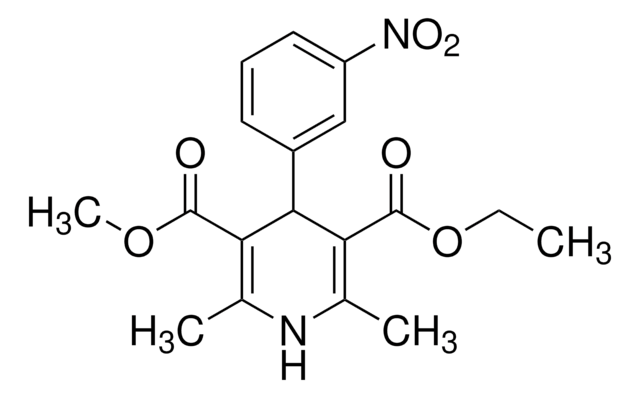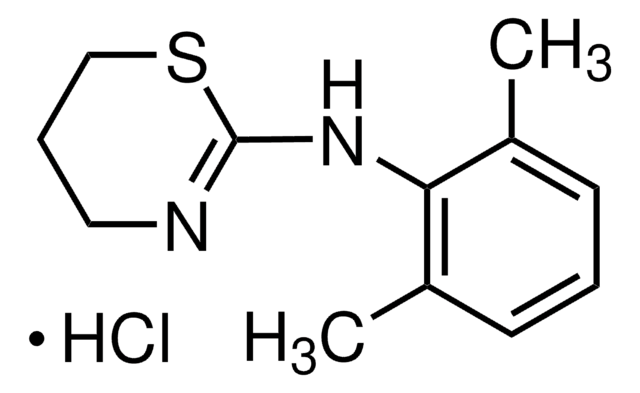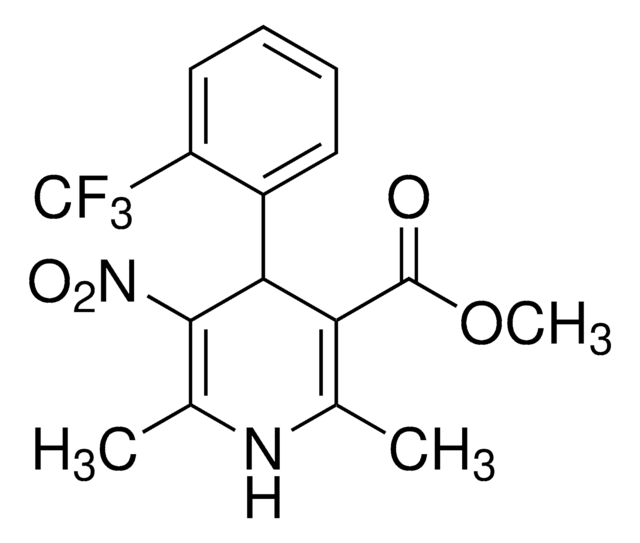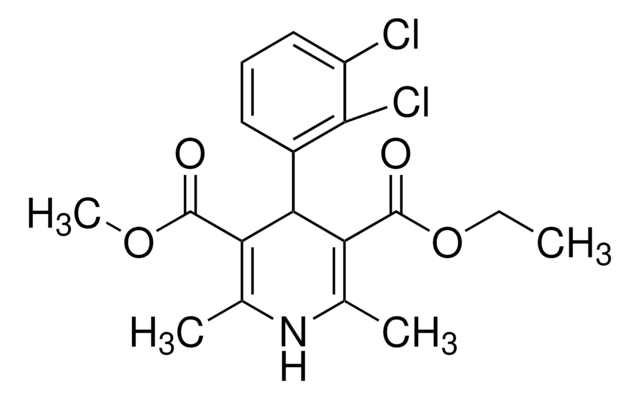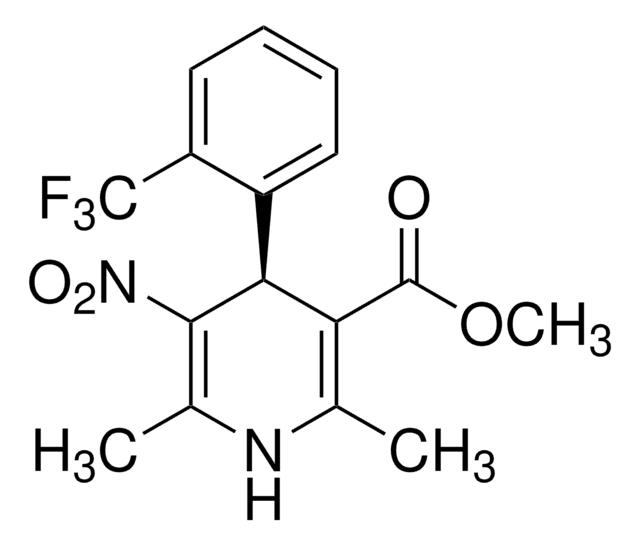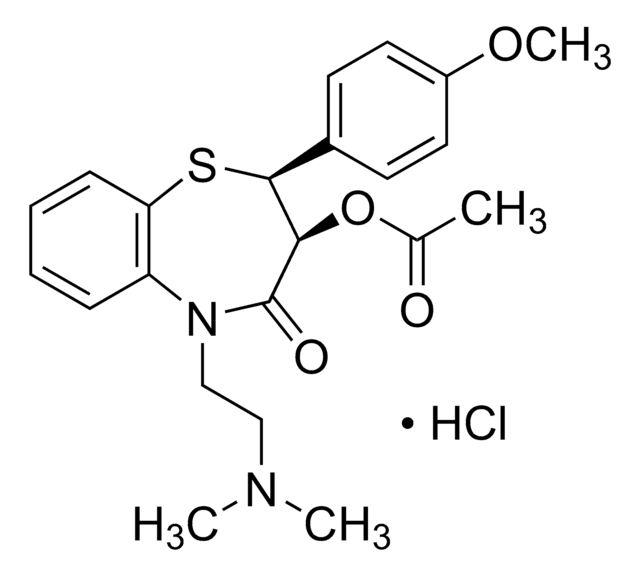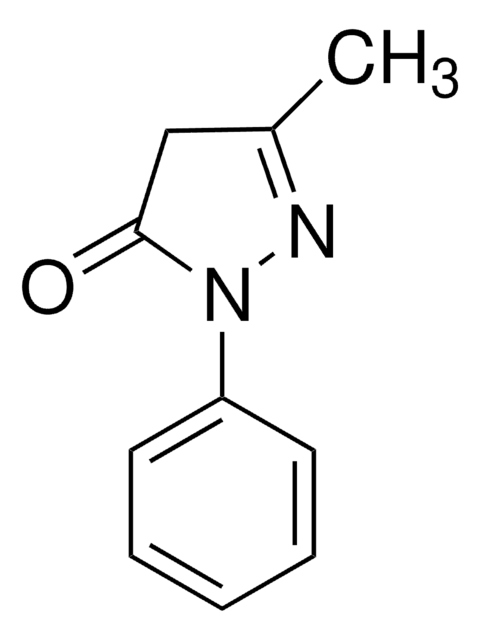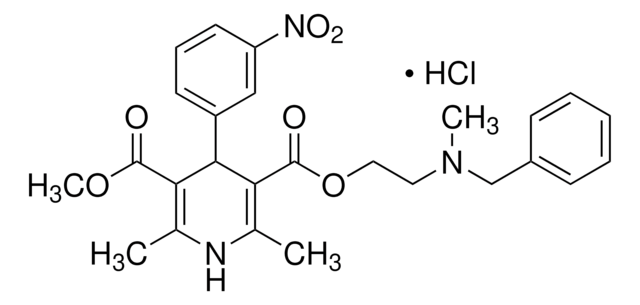Kluczowe dokumenty
N149
Nimodipine
Synonim(y):
1,4-Dihydro-2,6-dimethyl-4-(3-nitrophenyl)-3,5-pyridinedicarboxylic acid 2-methoxyethyl 1-methylethyl ester, Isopropyl 2-methoxyethyl 1,4-dihydro-2,6-dimethyl-4-(m-nitrophenyl)-3,5-pyridinedicarboxylate
About This Item
Polecane produkty
Próba
≥98% (HPLC)
Poziom jakości
Formularz
powder
kolor
off-white to yellow
rozpuszczalność
methanol: 62.5 mg/mL
45% (w/v) aq 2-hydroxypropyl-β-cyclodextrin: insoluble
H2O: insoluble
inicjator
Bayer
ciąg SMILES
COCCOC(=O)C1=C(C)NC(C)=C(C1c2cccc(c2)[N+]([O-])=O)C(=O)OC(C)C
InChI
1S/C21H26N2O7/c1-12(2)30-21(25)18-14(4)22-13(3)17(20(24)29-10-9-28-5)19(18)15-7-6-8-16(11-15)23(26)27/h6-8,11-12,19,22H,9-10H2,1-5H3
Klucz InChI
UIAGMCDKSXEBJQ-UHFFFAOYSA-N
informacje o genach
human ... ADORA3(140) , CACNA1C(775) , CACNA1D(776) , CACNA1F(778) , CACNA1S(779) , CACNG1(786) , NR3C2(4306)
rat ... Adora1(29290) , Adora2a(25369)
Szukasz podobnych produktów? Odwiedź Przewodnik dotyczący porównywania produktów
Zastosowanie
- as a L-type calcium channel (LTCC) inhibitor, to evaluate its neuroprotective activity in the vibrosections
- as a standard, in the enantioseparation of chiral drugs by high performance liquid chromatography (HPLC)
- in the pharmacological studies for the measurement of spine voltage escape
Działania biochem./fizjol.
Cechy i korzyści
Przestroga
Hasło ostrzegawcze
Warning
Zwroty wskazujące rodzaj zagrożenia
Zwroty wskazujące środki ostrożności
Klasyfikacja zagrożeń
Acute Tox. 4 Oral
Kod klasy składowania
11 - Combustible Solids
Klasa zagrożenia wodnego (WGK)
WGK 1
Temperatura zapłonu (°F)
Not applicable
Temperatura zapłonu (°C)
Not applicable
Środki ochrony indywidualnej
dust mask type N95 (US), Eyeshields, Gloves
Wybierz jedną z najnowszych wersji:
Masz już ten produkt?
Dokumenty związane z niedawno zakupionymi produktami zostały zamieszczone w Bibliotece dokumentów.
Klienci oglądali również te produkty
Nasz zespół naukowców ma doświadczenie we wszystkich obszarach badań, w tym w naukach przyrodniczych, materiałoznawstwie, syntezie chemicznej, chromatografii, analityce i wielu innych dziedzinach.
Skontaktuj się z zespołem ds. pomocy technicznej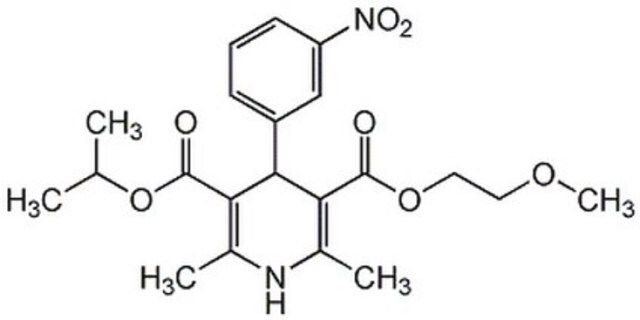
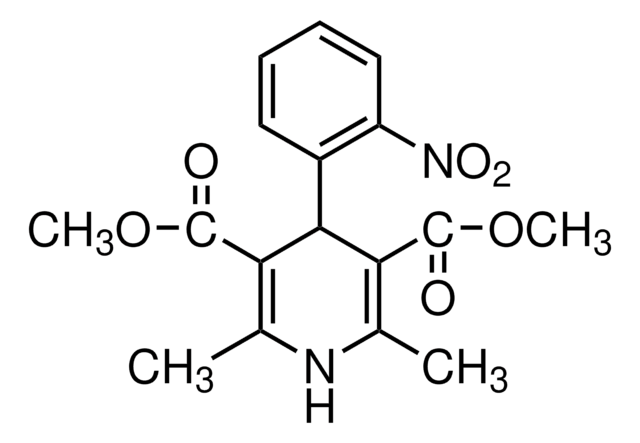
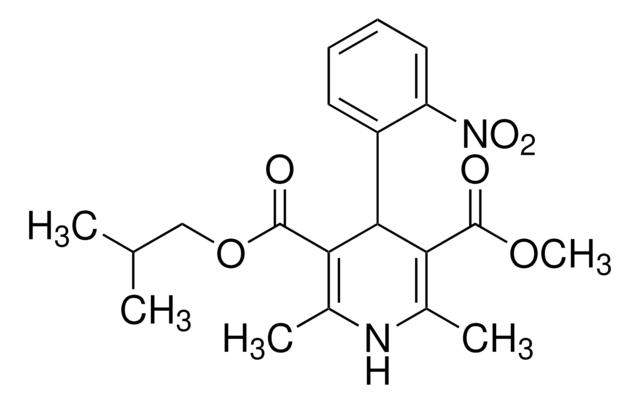
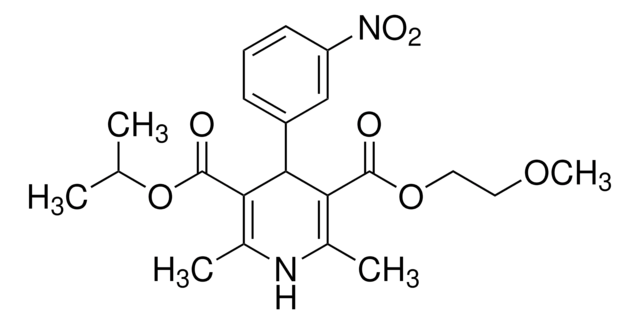
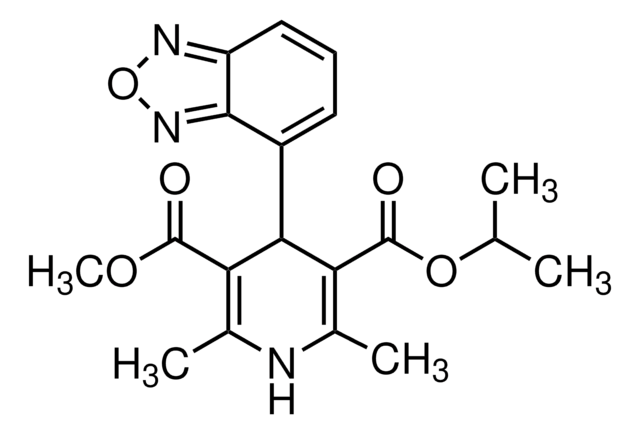

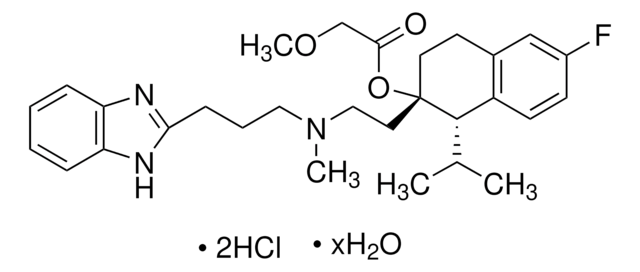
![N(1)-dodecyl-N(3)-[3-(dodecylamino)propyl]-1,3-propanediamine AldrichCPR](/deepweb/assets/sigmaaldrich/product/structures/184/200/68c42cb5-3811-47e2-9f1f-8987743b0fce/640/68c42cb5-3811-47e2-9f1f-8987743b0fce.png)
